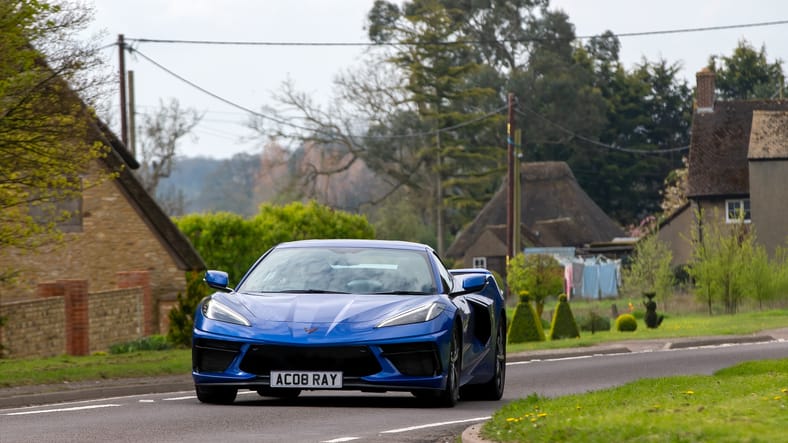The Chevrolet Corvette E-Ray: A Sting with a Charge

The Chevrolet Corvette has long been synonymous with American muscle, a roaring V8 engine propelling it to legendary status. But times are changing, and even the Corvette isn't immune to the winds of electrification. Enter the 2024 Chevrolet Corvette E-Ray, a hybrid iteration that marks a turning point for the iconic sports car.
A First for Corvette: Electrification and All-Wheel Drive
The E-Ray holds two significant firsts for the Corvette. It's the brand's first foray into electrification, a hybrid system that supplements the traditional V8 with an electric motor. Additionally, it breaks away from the rear-wheel-drive tradition by introducing an all-wheel-drive (AWD) option, a welcome change for performance driving in adverse conditions.

Hybrid Power for Enhanced Performance
The E-Ray's hybrid system pairs the familiar 6.2L LT2 small-block V8 engine from the Stingray with a front-mounted electric motor. This motor contributes an additional 160 horsepower, bringing the total output to a staggering 653 horsepower. The result is a Corvette that retains the thrilling V8 experience while offering a significant boost in power and acceleration.
This newfound power translates into exhilarating performance. The E-Ray rockets from 0 to 60 mph in a mere 2.5 seconds, making it the fastest accelerating production Corvette ever. It even surpasses the mighty Z06 in the quarter-mile, clocking in at 10.5 seconds.
All-Wheel Drive for Superior Handling
The AWD system is another game-changer for the Corvette. Traditionally known for its tail-happy nature, the E-Ray offers greater stability and control, especially on slippery surfaces. This doesn't compromise the Corvette's signature agility; the system seamlessly distributes power between the front and rear wheels, ensuring a precise and engaging driving experience.
Technology Meets Tradition
The E-Ray seamlessly blends the thrill of a gasoline engine with the efficiency of an electric motor. The electric motor allows for a silent electric-only driving mode, perfect for cruising around town with zero emissions. When needed, the V8 seamlessly kicks in, delivering the exhilarating power that Corvette enthusiasts crave.
The E-Ray boasts a regenerative braking system that captures energy during deceleration and stores it in the 1.9 kWh battery pack. This captured energy is then used to power the electric motor, extending the car's range and improving overall efficiency.
The interior of the E-Ray retains the driver-centric design of its predecessors. The instrument cluster features a digital display that provides crucial information about the hybrid system, including battery level and power distribution. The infotainment system remains intuitive and user-friendly, with features like Apple CarPlay and Android Auto for seamless smartphone integration.

A New Era for Corvette?
The E-Ray marks a significant departure from the Corvette's traditional formula. It represents a future where electrification enhances, rather than replaces, the exhilarating experience of a Corvette. While some purists might lament the addition of an electric motor, the E-Ray offers undeniable advantages.

The increased power, improved handling, and newfound efficiency make the E-Ray a compelling proposition for those seeking a versatile and powerful sports car. It's a testament to Chevrolet's ability to adapt to changing times while staying true to the Corvette's core principles.
Open Questions and the Road Ahead
The E-Ray's arrival begs questions about the future of Corvette. Will we see a fully electric Corvette in the coming years? How will the E-Ray fare against established hybrid supercars? Only time will tell.
One thing is certain: the E-Ray injects a dose of excitement into the Corvette legacy. It paves the way for a future where electrification and thrilling performance can coexist, ensuring the Corvette's place among the world's most coveted sports cars for generations to come.
